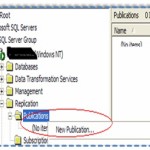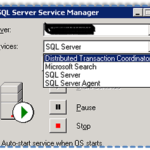SQL Server – Understanding of Replication
The primary purpose of replication is to distribute data from a master database to one or more secondary databases. Because Replication maintains a duplicate copy of data in synchronization with the master copy, the technology can be used to provide availability for application.
Type of Replication
- Snapshot
- Transactional
- Merge
Snapshot Replication
Snapshot Replication takes the entire set of data and sends it during the each cycle of replication. This is full copy of data that is sent by Publisher to subscriber.
Transactional Replication
Users obtain complete initial copies of the database and then obtain periodic updates as data changes.
We can configure transactional replication with two optional modes:
- Immediate updating subscriber
- Queued updating subscriber
Transactional Replication can be deployed in two alterative architectures:
- Bidirectional transactional replication
- Peer-to-peer transactional replication
Merge Replication
In merge replication received the data from two or more publishers is combined into a one subscriber.
Data Conflicts
Data conflicts can occurs within any environment that enable distributed processing of transaction.
Type of Conflicts
Three type of conflicts can occurs
- The insertion of a duplicate prinmary key on both publisher and subscriber
- A conflicting update same row at both publisher and subscriber
- An update of a nonexistent row
For more detail go to
http://msdn.microsoft.com/en-us/library/ms151198.aspx
http://msdn.microsoft.com/en-us/library/ms151215.aspx







Pingback: SQL Server – How to Setup SQL Server Replication | Varinder Sandhu